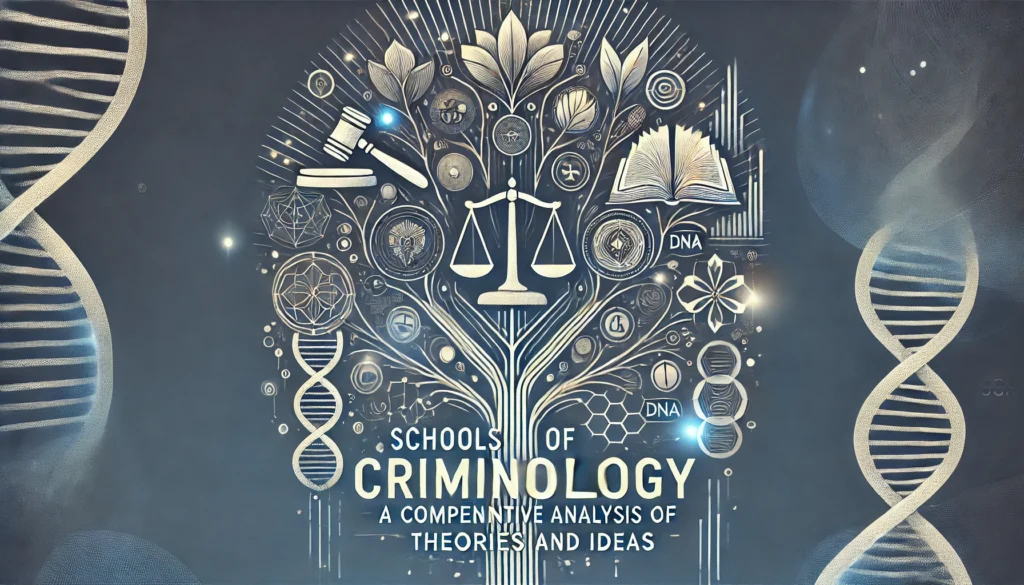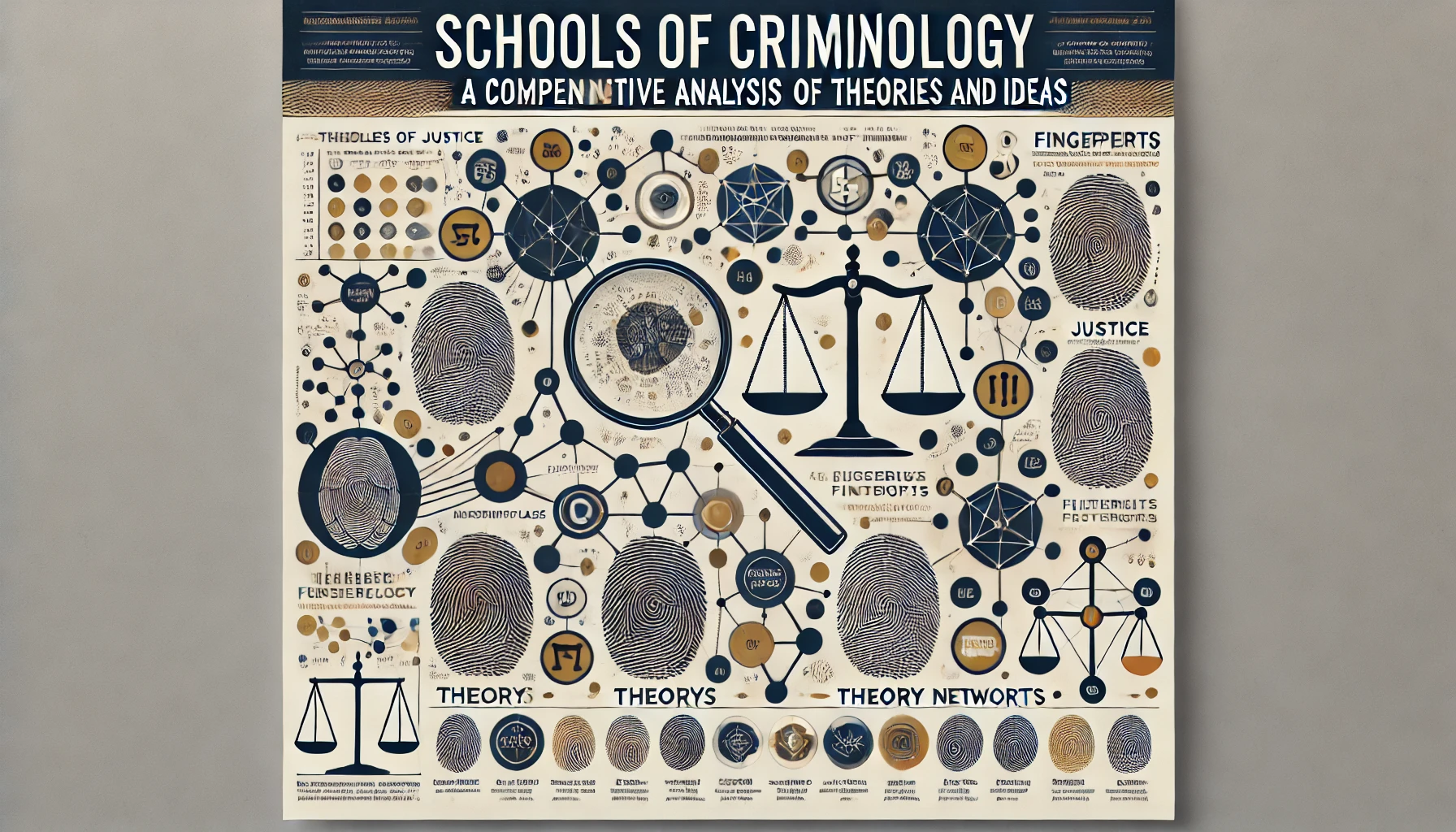Criminology, as a field, encompasses diverse schools of thought that provide varied perspectives on crime and criminal behavior. From biological explanations to sociological frameworks, these schools of thought reflect the evolving understanding of crime over time. This article delves into the major schools of criminology, analyzing their foundational theories and contributions to the field.
1. The Classical School of Criminology
Origins and Context
Emerging in the 18th century during the Enlightenment, the Classical School emphasized rationality, free will, and justice.
Key Principles
- Rational Choice: Crime is a product of free will and rational decision-making.
- Proportional Punishment: Penalties should be fair and proportional to the crime committed.
- Deterrence: Effective laws deter criminal behavior through certainty, severity, and swiftness of punishment.
Influential Figures
- Cesare Beccaria: Advocated for fair legal systems, opposing excessive punishments.
- Jeremy Bentham: Developed the concept of utilitarianism, focusing on maximizing societal well-being.
2. The Positivist School of Criminology
Emergence in the 19th Century
The Positivist School marked a shift towards scientific methods, emphasizing that crime is influenced by factors beyond individual control.
Key Theories
- Biological Determinism: Crime is linked to inherited traits and physical characteristics.
- Psychological Positivism: Criminal behavior stems from mental disorders or psychological conditions.
- Sociological Positivism: Social environments play a critical role in shaping behavior.
Influential Figures
- Cesare Lombroso: Known for his theory of the “born criminal,” linking criminality to physical anomalies.
- Enrico Ferri: Highlighted environmental and social factors in criminal behavior.
3. The Chicago School of Criminology
Focus on Urban Sociology
The Chicago School emerged in the early 20th century, emphasizing the influence of social environments, especially in urban settings.
Key Theories
- Social Disorganization Theory: Crime rates are higher in areas with social instability and economic deprivation.
- Cultural Transmission: Criminal values and behaviors are passed down within communities.
Contributions
The Chicago School pioneered the use of empirical methods, including field studies and crime mapping, to analyze crime patterns.
4. The Critical School of Criminology
Challenging Traditional Norms
The Critical School, gaining prominence in the 1960s, critiques existing power structures and their role in defining and perpetuating crime.
Key Theories
- Marxist Criminology: Crime is a result of class struggles and economic inequality.
- Feminist Criminology: Highlights gendered aspects of crime and the justice system.
- Postmodern Criminology: Examines how societal narratives shape perceptions of crime.
Focus Areas
This school emphasizes social justice, advocating for reforms to address systemic inequalities.

5. The Integrated School of Criminology
Blending Perspectives
Modern criminologists often integrate theories from different schools to provide a holistic understanding of crime.
Key Approaches
- Routine Activity Theory: Crime occurs when motivated offenders meet suitable targets in the absence of capable guardians.
- General Strain Theory: Expands on traditional strain theories to include emotional and social factors.
Applications
Integrated approaches are used in designing comprehensive crime prevention strategies.
6. Comparison of Criminological Schools
| Aspect | Classical | Positivist | Chicago | Critical |
|---|---|---|---|---|
| Focus | Free will and rationality | Biological and environmental factors | Urban and social environments | Power dynamics and inequalities |
| Methodology | Philosophical and normative | Scientific and empirical | Empirical and observational | Analytical and critical |
| Objective | Justice and deterrence | Understanding causation | Community-based solutions | Social justice and reform |
7. Relevance for Students and Researchers
Studying these schools provides a deeper understanding of:
- Crime Prevention: Designing effective policies and interventions.
- Criminal Justice Reform: Addressing biases and systemic issues.
- Interdisciplinary Approaches: Bridging sociology, psychology, and law.
Conclusion
The schools of criminology represent a rich tapestry of ideas that have shaped the field. By exploring these perspectives, students and researchers can gain a nuanced understanding of crime and its complexities, paving the way for innovative solutions and a more just society.

